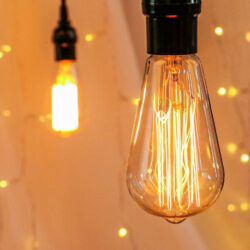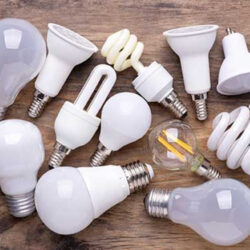Light Bulbs
Cordlesspowertools Canada Online stores have a wide range of Light Bulbs Products that are available in different types and prices. Popular brands like Bosch, Dewalt, Hitachi, Dongcheng, Cumi, KPT, Ferm, Black Decker, Makita, Jon Bhandari, Ken, Metabo, Bullet, Planet Power, Stanley, Maktec, Ralli Wolf, AOG, Falcon, Hit-Min, IDeal, Eastman, Fein, Electrex, Craftsman, AEG, Zogo, Xtra Power, DCA, Yuri have a vast range of models available with different designs and functionalities. You can easily browse through the products, compare them and choose the one that best fits your needs.
-

Black Light Bulbs (1)
-

Compact Fluorescent Bulbs (1)
-

Fluorescent Tubes (1)
-

Incandescent Bulbs (1)
-

LED Bulbs (1)
Illuminate Your Space with the Best Lights & Bulbs
Enhance Your Space with the Best Lights & Bulbs Lighting is one of the most essential elements of any space, both indoors and outdoors. Enhance Your Space with the Best Lights & Bulbs. From creating a cosy ambience to providing bright, functional illumination, the right lighting can transform any room or outdoor area. Whether you're looking for modern LED lights, classic lamps, or practical outdoor lights, there is a wide range of options to choose from. This guide will walk you through the different types of lights and bulbs available, helping you find the perfect solution for your home or garden.
Types of Lights & Bulbs for Every Need
LED Lights: Energy-Efficient and Long-Lasting
LED lighting is becoming increasingly popular due to its energy efficiency and long lifespan. They consume less power compared to traditional bulbs, making them an eco-friendly choice for homes and businesses. LED lights come in various designs, including ceiling lights, profile lights, and outdoor wall lights, offering versatility for every space.
Lamps: Classic Lighting with a Modern Twist
Lamps remain a timeless lighting option, whether you're looking for a functional desk lamp or a decorative piece like a lava lamp or a moon lamp. Provide both task lighting and a soft glow, ideal for creating a warm, welcoming environment in living rooms, bedrooms, and offices.
Ceiling Lights: Stylish and Functional
Ceiling lights are perfect for providing overhead illumination in any room. Whether you prefer modern designs or classic chandeliers, ceiling lights can add style while ensuring proper visibility. Profile lights are sleek, contemporary options that add a touch of elegance to any room.
Outdoor Lights: Enhance Your Garden and Exterior
Good outdoor lighting is essential for both aesthetics and security. Options like garden lights and outdoor wall lights are designed to highlight your outdoor areas and keep your property safe. For those late-night walks, having a flashlight handy is always a good idea.
Required functions of the light & Bulbs
- Energy Efficiency: Opt for energy-efficient lights like LED bulbs to save on electricity bills while reducing your carbon footprint.
- Durability: Choose durable materials, especially for outdoor lights, to ensure they withstand different weather conditions.
- Brightness Levels: Depending on the room or area, consider lights with adjustable brightness levels. For instance, ceiling lights should be bright enough to illuminate the entire room, while lamps can offer softer lighting for a relaxing atmosphere.
- Design: Lighting is not just about function—style plays a big role too. Whether you choose a funky lava lamp or a sleek profile light, pick a design that complements your decor.
- Versatility: Look for lights that can serve multiple purposes, such as flashlights for emergencies or outdoor wall lights that also improve home security.
Benefits of High-Quality Lighting
- Enhanced Ambience: The right lighting can completely transform the feel of a space, making it more inviting or functional based on your needs.
- Improved Visibility: Proper lighting improves visibility and safety, especially in workspaces or outdoor areas.
- Energy Savings: Switching to LED lights can significantly reduce your electricity consumption and save money in the long run.
- Increased Security: Outdoor lights, including garden lights and outdoor wall lights, help deter potential intruders by illuminating dark areas around your home.
Choosing the Right Lighting for Your Space
When selecting lights and bulbs, consider the specific function of each room or area. For example:
- Living rooms may benefit from stylish ceiling lights combined with lamps for a cosy atmosphere.
- Kitchens require bright, task-oriented lighting, making profile lights or powerful LED lights an excellent choice.
- For outdoor areas, garden lights and outdoor wall lights not only enhance aesthetics but also improve safety.
Conclusion
Whether you're upgrading your home lighting or adding new lights to your garden, the right lights and bulbs can make a huge difference in functionality, safety, and style. From LED lights to decorative lamps like the moon lamp or lava lamp, and practical options like flashlights and outdoor wall lights, you have plenty of choices to suit your needs. Explore the range of lighting options available and brighten up every corner of your space with high-quality, energy-efficient solutions.
With the right combination of lights, you can enhance any room's atmosphere, improve visibility, and reduce energy consumption—all while adding a touch of personal style.
Illuminate Your Space with the Best Lights & Bulbs
Enhance Your Space with the Best Lights & Bulbs Lighting is one of the most essential elements of any space, both indoors and outdoors. Enhance Your Space with the Best Lights & Bulbs. From creating a cosy ambience to providing bright, functional illumination, the right lighting can transform any room or outdoor area. Whether you're looking for modern LED lights, classic lamps, or practical outdoor lights, there is a wide range of options to choose from. This guide will walk you through the different types of lights and bulbs available, helping you find the perfect solution for your home or garden.
Types of Lights & Bulbs for Every Need
LED Lights: Energy-Efficient and Long-Lasting
LED lighting is becoming increasingly popular due to its energy efficiency and long lifespan. They consume less power compared to traditional bulbs, making them an eco-friendly choice for homes and businesses. LED lights come in various designs, including ceiling lights, profile lights, and outdoor wall lights, offering versatility for every space.
Lamps: Classic Lighting with a Modern Twist
Lamps remain a timeless lighting option, whether you're looking for a functional desk lamp or a decorative piece like a lava lamp or a moon lamp. Provide both task lighting and a soft glow, ideal for creating a warm, welcoming environment in living rooms, bedrooms, and offices.
Ceiling Lights: Stylish and Functional
Ceiling lights are perfect for providing overhead illumination in any room. Whether you prefer modern designs or classic chandeliers, ceiling lights can add style while ensuring proper visibility. Profile lights are sleek, contemporary options that add a touch of elegance to any room.
Outdoor Lights: Enhance Your Garden and Exterior
Good outdoor lighting is essential for both aesthetics and security. Options like garden lights and outdoor wall lights are designed to highlight your outdoor areas and keep your property safe. For those late-night walks, having a flashlight handy is always a good idea.
Required functions of the light & Bulbs
- Energy Efficiency: Opt for energy-efficient lights like LED bulbs to save on electricity bills while reducing your carbon footprint.
- Durability: Choose durable materials, especially for outdoor lights, to ensure they withstand different weather conditions.
- Brightness Levels: Depending on the room or area, consider lights with adjustable brightness levels. For instance, ceiling lights should be bright enough to illuminate the entire room, while lamps can offer softer lighting for a relaxing atmosphere.
- Design: Lighting is not just about function—style plays a big role too. Whether you choose a funky lava lamp or a sleek profile light, pick a design that complements your decor.
- Versatility: Look for lights that can serve multiple purposes, such as flashlights for emergencies or outdoor wall lights that also improve home security.
Benefits of High-Quality Lighting
- Enhanced Ambience: The right lighting can completely transform the feel of a space, making it more inviting or functional based on your needs.
- Improved Visibility: Proper lighting improves visibility and safety, especially in workspaces or outdoor areas.
- Energy Savings: Switching to LED lights can significantly reduce your electricity consumption and save money in the long run.
- Increased Security: Outdoor lights, including garden lights and outdoor wall lights, help deter potential intruders by illuminating dark areas around your home.
Choosing the Right Lighting for Your Space
When selecting lights and bulbs, consider the specific function of each room or area. For example:
- Living rooms may benefit from stylish ceiling lights combined with lamps for a cosy atmosphere.
- Kitchens require bright, task-oriented lighting, making profile lights or powerful LED lights an excellent choice.
- For outdoor areas, garden lights and outdoor wall lights not only enhance aesthetics but also improve safety.
Conclusion
Whether you're upgrading your home lighting or adding new lights to your garden, the right lights and bulbs can make a huge difference in functionality, safety, and style. From LED lights to decorative lamps like the moon lamp or lava lamp, and practical options like flashlights and outdoor wall lights, you have plenty of choices to suit your needs. Explore the range of lighting options available and brighten up every corner of your space with high-quality, energy-efficient solutions.
With the right combination of lights, you can enhance any room's atmosphere, improve visibility, and reduce energy consumption—all while adding a touch of personal style.
